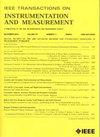Suppressing the Static Magnetic Field Error Based on the Rb–Xe Coupling Effect in NMR Angular Velocity Sensor
IF 5.6
2区 工程技术
Q1 ENGINEERING, ELECTRICAL & ELECTRONIC
IEEE Transactions on Instrumentation and Measurement
Pub Date : 2025-06-23
DOI:10.1109/TIM.2025.3579849
引用次数: 0
Abstract
The nuclear magnetic resonance (NMR) angular velocity sensor exhibits compactness and high precision, leveraging an in situ rubidium (Rb) magnetometer to determine the precession frequencies of double-isotope Xe (129Xe and 131Xe), which are critical for angular velocity determination. However, its performance is substantially affected by static magnetic field variations, which not only alter the precession frequencies of 129Xe and 131Xe but also induce shifts in Rb precession frequency, thereby introducing measurement errors in angular velocity. To mitigate this challenge, this study investigates the impact of static magnetic field shifts on the precession frequency measurement error and presents a suppression method based on the Rb–Xe coupling effect. This method comprehensively evaluates the influence of static magnetic field shifts on the Rb, 129Xe, and 131Xe magnetic moment signals, ultimately proposing a static magnetic field error suppression method. Notably, this approach effectively suppresses the static magnetic field error without influencing the measurement sensitivity. Experimental validation reveals a significant 48.8% reduction in static magnetic field error. Long-term stability of precession frequency measurement error between 129Xe and 131Xe shows a 24.9% reduction in the maximum variation and a 25.1% decrease in bias instability during 2-h continuous monitoring. This innovative approach offers substantial benefits for advancing the performance and reliability of angular velocity sensor.基于Rb-Xe耦合效应的核磁共振角速度传感器静磁场误差抑制
核磁共振(NMR)角速度传感器具有紧凑和高精度的特点,利用原位铷(Rb)磁强计来测定双同位素Xe (129Xe和131Xe)的进动频率,这是测定角速度的关键。静态磁场的变化不仅会改变129Xe和131Xe的进动频率,还会引起Rb进动频率的变化,从而导致角速度的测量误差。为了缓解这一挑战,本研究研究了静磁场位移对进动频率测量误差的影响,并提出了一种基于Rb-Xe耦合效应的抑制方法。该方法综合评价了静磁场位移对Rb、129Xe、131Xe磁矩信号的影响,最终提出了一种静磁场误差抑制方法。值得注意的是,该方法在不影响测量灵敏度的情况下有效地抑制了静磁场误差。实验验证表明,静态磁场误差显著降低48.8%。在129Xe和131Xe之间的进动频率测量误差的长期稳定性表明,在连续监测2 h期间,最大变化减少了24.9%,偏置不稳定性减少了25.1%。这种创新的方法为提高角速度传感器的性能和可靠性提供了实质性的好处。
本文章由计算机程序翻译,如有差异,请以英文原文为准。
求助全文
约1分钟内获得全文
求助全文
来源期刊

IEEE Transactions on Instrumentation and Measurement
工程技术-工程:电子与电气
CiteScore
9.00
自引率
23.20%
发文量
1294
审稿时长
3.9 months
期刊介绍:
Papers are sought that address innovative solutions to the development and use of electrical and electronic instruments and equipment to measure, monitor and/or record physical phenomena for the purpose of advancing measurement science, methods, functionality and applications. The scope of these papers may encompass: (1) theory, methodology, and practice of measurement; (2) design, development and evaluation of instrumentation and measurement systems and components used in generating, acquiring, conditioning and processing signals; (3) analysis, representation, display, and preservation of the information obtained from a set of measurements; and (4) scientific and technical support to establishment and maintenance of technical standards in the field of Instrumentation and Measurement.
 求助内容:
求助内容: 应助结果提醒方式:
应助结果提醒方式:


